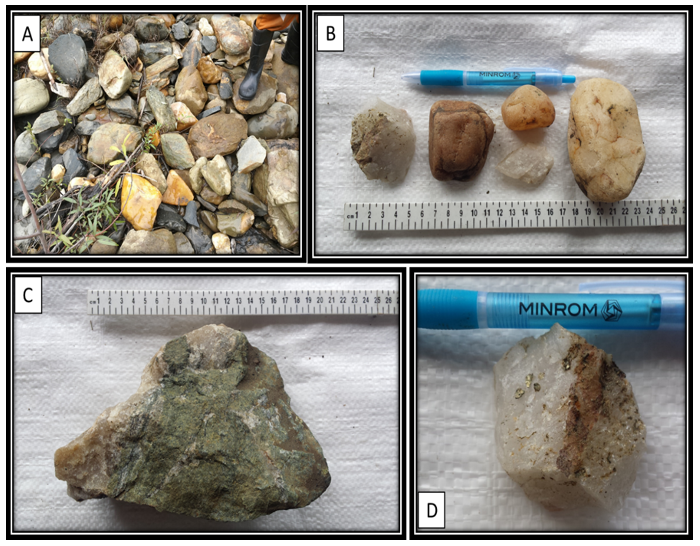Zambia Gold Deposit | Minrom
Minrom was requested by a renowned gold company in Zambia to conduct geological exploration programmes on two individual sites in Zambia for potential gold deposits.
Zambia is geologically comprised of several individual craton terrains, which include stable cratons, Pan-African mobile belts, sedimentary successions, and post-Karoo sedimentary cover. The geology of the central province of Zambia hosts predominantly three supracrustal successions, these include the Muva Supergroup, Katanga Supergroup, and the Karoo Supergroup.
The project area is located within the Quaternary sediment consisting alluvium, colluvium and laterite succession surrounding the Mkushi River in the southern portion of the central province of Zambia. The alluvium, colluvium and lateritic unit is comprised of predominantly clay and silt with sedimentary gravel units located at the base of the sequence. The alluvium unit is underlain by rocks of the Muva Supergroup. These Quaternary sediments and the Muva Supergroup host the alluvial gold occurrence.

As part of the exploration program Minrom conducted surface mapping, trenching, and sampling. The areas were traversed to determine the horizontal extent of the deposit, lithological units, and structures present. Sampling locations were also selected to determine the grade variation throughout the area.
Based on limited assay analysis conducted on this project Minrom did a range analysis and predicted a potential mineralisation model that attained great gold tonnages and grades withing the alluvial material.
It has been confirmed that the current project area contains an alluvial gold occurrence. However, the potential of the deposit, to sustain a mining operation, is not yet clear. The following recommendations was made by Minrom to development the exploration project:
- Complete the assay analysis from Phase 1.
- Develop a Phase 2 geological model of the ore body based on additional trenching and sampling results for grade estimations.

435 total views , 3 views today





